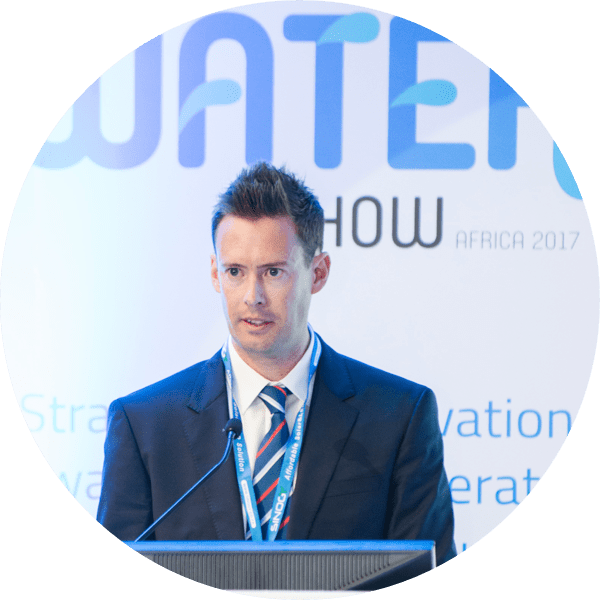From the FIWARE newsroom in collaboration with Robert Brears*
Globally, climate change, population growth, and land-use change will likely result in surface flows and groundwater levels decreasing over time. Drastic climatic extremes will result in water scarcity becoming more frequent in less obvious areas, while traditionally drier areas will experience more severe storms in between long dry spells. The likelihood is a future where water shortages occur in some areas while at the same time flooding occurs in others.
If the water sector does not improve infrastructure and water efficiency, there is a risk of water scarcity impacting the livelihoods and well-being of people, businesses, farmers, the environment, and nature. Meanwhile, large-scale investment in green infrastructure is required to not only manage climatic extremes but also meet environmental targets at a lower cost than traditional grey infrastructure, all the while enhancing the liveability of cities and restoring the natural environment.
A strong focus on large-scale, supply-side infrastructure
Traditionally, water managers, faced with increasing demand for water alongside varying levels of supplies, have relied on large-scale, supply-side infrastructure projects, such as dams and reservoirs, to meet increased demands for water. This supply-side approach, however, is under increasing pressure from both climatic and non-climatic trends impacting the availability of good quality water of sufficient quantities.
To enhance water security, water managers are turning towards demand-side management, which aims to improve the provisions of existing water supplies before new supplies are developed. Demand management practices range from the application of smart water meters in businesses and households to educational tools to enhance awareness of the need to conserve water.
What has the green economy got to do with it?
Green infrastructure can enhance the resilience of populations to climatic extremes while preserving and restoring the natural environment. Green infrastructure varies in the scale and scope and includes green roofs, urban rooftop farming, rainwater harvesting, green walls, and urban parks. In addition to managing excess stormwater and mitigating the effects of droughts, green infrastructure provides a range of multiple co-benefits including supporting economic development in urban areas by providing green jobs, lowering carbon emissions and improving air quality, lowering the urban heat island effect, and increasing people’s happiness and general health.
Overall, solutions to water challenges conserve precious water resources and protect and restore the natural environment.
FIWARE is dipping its toes into the Smart Water Management movement
One of these solutions is the project FIWARE4Water. A consortium of fourteen European partners, including major stakeholders in the field of Water Management, the project was launched in June of 2019 and is one of the four new Horizon 2020 projects joining forces to foster the digital transformation of the water sector. The ultimate goal of FIWARE4Water is to bring about the standards that connect the physical and digital world, thereby creating replicable success stories in efficient resource management. The goal is to support water management processes and bring together communities of innovation suppliers and end-users.
Be it cities, water utilities, water authorities, solution providers, or citizens, the benefits will be seen by all. All in all, not only large corporations but also SMEs will be able to capture the opportunities derived from this new wave of digitization in the water sector. Water is clearly a key factor for both the economy and society and digital solutions are important for addressing water challenges. Want to delve into this topic? Then, join us on September 17 (2:00-4:30 pm – CEST) for the FIWARE Water Day.
This free virtual experience will address how to overcome those challenges from different perspectives, how we can do more with less water in a sustainable manner, from Innovation in technology to financing, business models, partnerships, and policy as main enablers for society and businesses to make effective change happen. Join the FIWARE Community to discuss how Open Source technology, key standards, and collaboration are addressing the water challenges and adapting water resource management to climate change.
 *A media partner and collaborator of FIWARE, Robert Brears is the Founder of Our Future Water and Author of Urban Water Security, The Green Economy and the Water-Energy-Food Nexus as well as Blue and Green Cities. His widely published works surround issues such as water security and water resource management, following research Brears has conducted around the world, including Antarctica. All in all, his extended expertise spans across many fields, not least Water and Circular Economy. Robert will be moderating the FIWARE Water Day on September 17.
*A media partner and collaborator of FIWARE, Robert Brears is the Founder of Our Future Water and Author of Urban Water Security, The Green Economy and the Water-Energy-Food Nexus as well as Blue and Green Cities. His widely published works surround issues such as water security and water resource management, following research Brears has conducted around the world, including Antarctica. All in all, his extended expertise spans across many fields, not least Water and Circular Economy. Robert will be moderating the FIWARE Water Day on September 17.



